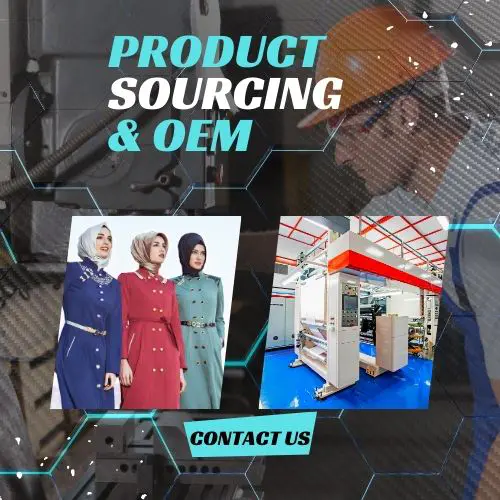Payment Terms for goods in international trade is a significant factor that should be addressed early. Notwithstanding, due to the frequently convoluted nature of worldwide exchange, Payment in these conditions isn't regularly direct.
Payments in trade finance have varying types of risk for the importer and the exporter.
There are a few complex cycles included, and a lot of choices to consider for how these Payments can be made – as a rule called Payment terms or strategies for Payment. Add the way that the Payment terms you pick can be a factor in deciding how appealing your proposition is, and things settle the score more flighty.
What are the kinds of Payment techniques you should know, and how would they contrast and each other? This aide brings a profound plunge into Payment terms in global exchange, including their importance, how they work, and how to choose what's best for you.
In this section, we may consider the importer as the buyer and the exporter as the seller.
Payment terms in International Business
With regards to worldwide exchange of goods, the most common way of purchasing and selling can be drawn out, and regularly confounded. Thus, it's reasonable to feel mitigated in the wake of closing a deal with the other party and concurring on a cost. In any case, conceding to a cost is just a single piece of the Payment interaction. You actually need to concur on how Payment will be made, and when. This is the place where Payment terms come in.
Payment terms are the conditions that gatherings in global exchange concede to finish Payment. They are regularly alluded to as the techniques for Payment that exporters and merchants can use to settle their economic accord. Payment terms manage numerous significant issues identifying with the economic agreement. These incorporate whether Payment will be made before conveyance, who holds responsibility for merchandise before conveyance, and how Payment will be made1.
Of course, payment is a significant piece of getting a productive exchange whether you're trading or bringing in merchandise. Yet, the Payment terms that are used can assume a significantly more significant part in drawing in great exchanges the primary spot, particularly for venders. Purchasers in a perfect world need to postpone Payment however much as could reasonably be expected, ideally until they get or even sell the products. Merchants additionally need to gather Payment as ahead of schedule as could be expected, preferably before they send the merchandise or promptly upon receipt. The entirety of this makes tracking down the right Payment terms a difficult exercise that the two players need to get perfectly.
So, let us move close to the sorts of Payment terms in worldwide exchange and how they work.

1. Cash Advance
A cash advance requires payment from the buyer (importer) to the seller (exporter) before the goods have been shipped. Therefore, the buyer assumes all the risk.
Also known as payment in advance' or ‘money with order', cash ahead of time implies precisely what it seems like. It is a generally direct Payment strategy where the importer (typically the purchasing party) pays for the products forthright and before shipment. The Payment might be finished using any and all means concurred between the exporter and the merchant. Mainstream alternatives incorporate wire move, worldwide check, and Payment by charge card.
This payment term unmistakably favors the exporter since it implies they get paid while still possessing the merchandise. An average strategy for parties utilizing this technique is to concur that a set level of the cost will be paid before creation begins. After creation, either all or the majority of the exceptional cost will be paid before shipment. They may then concur that any sums left will be endless supply of the merchandise by the shipper.
Money ahead of time presents a great deal of hazard for the merchant. This is on the grounds that it sets them in where the exporter actually has proprietorship and ownership of the products and has as of now got Payment for the merchandise. It likewise makes a negative income circumstance for the merchant since they need to address the entirety of the cost upfront and in real money – a position most purchasers attempt to stay away from.
Clearly, this Payment choice might be accessible in uncommon circumstances. This can incorporate where the request size is tiny, or circumstances where the exporter is in an extremely impressive bargaining posture (like where the merchandise are scant). It can likewise be a possibility for exporters who are not persuaded of the shipper's credit-value, or where the merchant totally confides in the vender.
Therefore, exporters will seldom offer this Payment term since it presents such a lot of hazard for the buyer. Assuming you need to draw in more deals or a more excellent of purchasers, you should be more adaptable with your Payment terms, aside from where the uncommon conditions referenced above exist.
Cash advances are common with low-value orders. For example, when purchasing from online retailers.
For a seller, a cash advance is by far the least risky payment method. It provides a seller with upfront working capital to produce and ship the goods, as well as security (there is no risk of late or non-payment). Conversely, as a buyer, a cash advance is the least favorable payment method. It may lead to cash flow issues for the buyer and increases exposure/risk to the seller. It can also be problematic if the delivered goods aren't up to standard, faulty, or not delivered on time.
2. Letters of Credit (LCs)
Letters of credit (LCs), also known as Documentary Credits, are financial, legally binding instruments, issued by banks or specialist trade finance institutions. An LC guarantees that the seller will be paid on behalf of the buyer, if the terms specified in the LC are fulfilled.
An LC requires an importer and an exporter, with an issuing bank and potentially a confirming (or advising) bank respectively. The financiers and their creditworthiness are crucial for this type of trade finance. The issuing and confirming bank effectively replace the guarantee of payment from the buyer, reducing the risk to the supplier. This is called credit enhancement.
Letter of credit is perhaps the most notable terms of Payment in international trade exchange. It is additionally perhaps the most secure Payment strategies available. This Payment technique is very mainstream in the Middle East and China. It includes a payment interaction that is directed by a bank for the benefit of the merchant. The letter of credit is an archive that works as an assurance by the bank saying it will pay the exporter for the products once certain agreements are satisfied. These agreements are commonly remembered for the letter of credit itself, and generally have to do with reviewing the archives going with the merchandise, instead of the actual products.
Before a merchant can acquire a letter of credit, they should have the option to fulfill their bank of their credit-value. At the point when the bank finishes the Payment for the shipper, they will turn towards the merchant for repayment. This is typically founded on terms concurred between the merchant and the bank.
Letters of credit are generally pertinent in circumstances where the exporter and merchant have a new and untested exchange relationship. They can likewise be a decent alternative where the exporter isn't happy with the credit-value of the shipper or can't affirm this. In any case, a letter of credit gives less danger to the exporter since they have a strong assurance of Payment.
This payment term has its impediments however. As far as one might be concerned, it is by and large viewed as over the top expensive, as the banks included will normally charge critical charges. The charges will change contingent upon the merchant's FICO score and the intricacy of the exchange. Additionally, the bank doesn't by and large investigate the merchandise dispatched by the exporter. This implies there might be no arrangement to set up the nature of the merchandise all the while.
An LC transaction generally happens as follows
- An importer agrees to buy goods from an exporter – a purchase order (PO) is issued
- The importer will approach an issuing bank (trade financier) which will issue an LC if the company fulfills the bank's criteria (e.g. they are creditworthy)
- The exporter will work with a confirming bank, who will request that the LC documents be checked from the issuing bank (of the importer)
- The confirming bank will then check the LC and, if the terms are agreeable, the exporter will ship the goods
- The exporter then sends the relevant shipping documents to the confirming bank
- Once the confirming bank has examined the shipping documents in strict compliance against the LC terms from the issuing bank, they will forward these documents on to the issuing bank
- Payment is made according to the agreed terms; guaranteed by the issuing bank
- The issuing bank then releases the shipping documents so that the importer can claim the goods that were shipped
- Depending on the terms agreed, the issuing bank then transfers money to the confirming bank who will then transfer the funds onto the exporter
An LC is universally governed by a set of guidelines known as the Uniform Customs and Practice (UCP 600), produced by the International Chamber of Commerce (ICC).
The beauty of an LC is that it can meet a variety of needs, that benefit both the buyer and the seller. For this reason, the terms in an LC are important to understand.

3. Documentary Collections (DCs)
A Documentary Collection (DC) differs from a Letter of Credit (LC).
The role of banks in a Documentary Collection is limited. They do not verify the documents, take credit or country risks, or guarantee payment. The banks just control the flow of the documents.
DCs are more convenient and more cost-effective than Letters of Credit, and can be useful if the exporter and importer have a good relationship. DCs are often used if the importer is situated in a politically and economically stable market.
DC is an extremely adjusted Payment term that gives practically equivalent danger openness to exporter and shipper. This strategy is finished solely between banks following up for the benefit of the two players. The cycle begins when the exporter delivers the products and sends records expected to guarantee the merchandise to the buyer. These reports typically incorporate the Bill of Lading.
There are two significant strategies inside this Payment term. They are
- Documents against Payment (DAP): Here, the understanding is that the bank will deliver Payment to the exporter after locating the records. No deferral in Payment is normal here, and when the records are shown (and discovered customary), Payment should be finished.
- Documents against acknowledgment (DA): the understanding is that the reports will be conveyed to the buyers's bank once there is a strong obligation to pay on a proper date. This implies Payment isn't gotten quickly, yet out on the town concurred between the gatherings.
Since this Payment technique is moderately adjusted, it doesn't open either party to an excessive amount of risk. The merchant just relinquishes proprietorship and ownership of the merchandise once Payment or a strong obligation to pay is gotten. The purchaser possibly pays when they see the documents for the merchandise, or even subsequent to taking actual conveyance. This technique likewise includes less expense generally than letter of credit, and it very well may be set up significantly quicker.
Nonetheless, actually like letter of credit, the focal point of the two banks is on documents, and not really the actual products. This implies it could be more diligently to find an issue with the nature of the merchandise before Payment is made. The Payment technique additionally gives almost no plan of action to the exporter if the merchant neglects to pay for the products. Aside from these, narrative assortments present a decent Payment technique for both exporter and merchant.

4. Open Account
In an open account transaction, the buyer pays the seller after the goods have arrived (typically NET 30-90 days after). This is obviously advantageous to the buyer and carries substantial risk for the seller. It often occurs if the relationship and trust between the two parties is strong.
This payment term includes an economic alliance where the exporter consents to get it done for the shipper without getting Payment until a later date. Payment ordinarily falls due after a concurred period, regularly 30, 60, or 90 days after conveyance. Subsequently, the merchant basically gets the merchandise on layaway, with Payment to follow sometime in the future.
Unmistakably, this Payment Terms technique favors the buyer, since they partake in the situation of taking conveyance of the products without making Payment. It can decrease their working costs, seeing as they can just request the products and attempt to sell totally before they need to pay the exporter. It additionally lessens their requirement for working capital, as they don't need to stress over opening up assets to finish Payment prior to taking conveyance of the products.
Because of these benefits, merchants are consistently quick to discover exporters that give open record Payment terms. In a purchasers' market, you might see open account terms being the predominant method of Payment. Exporters that additionally need to show trust in an esteemed client or that need to draw in a significant record might be more ready to offer these terms.
Open account trade helps to increase competitiveness in export markets, and buyers often push for sellers to trade on open account terms. As a result, sellers are more likely to seek trade finance to fund working capital while waiting for the payment.
Trade credit insurance may be used to reduce the risk of commercial losses, which could result from the default, insolvency or bankruptcy of a buyer.
Notwithstanding, you should remember that open account is likewise exceptionally unsafe for exporters. The dangers of non-Payment, late Payment, insolvency, and other startling occasions are extremely high in this exchange. Also, exporters basically need to create the products and boat them without getting Payment. This can leave them with less working capital than they might want. By and large, this Payment term can possibly place exporters in an extremely fragile position.
Hence, it is extremely not unexpected to see exporters attempt to secure their situation by investigating exchange finance choices. These are basically systems that assist the exporter with ensuring themselves against misfortune, forthcoming when they get full Payment from the merchant. Mainstream choices exporters can investigate incorporate fare credit insurance4 and factoring5.
You ought to just investigate this choice in circumstances where you have a generally safe exchanging relationship with the merchant. Another chance is the place where there is extremely low interest or where you are hoping to win significant clients.
5. Consignment
Here, the exporter creates, ships, and gets it done for the buyer, but gets paid after the products have been sold. You can frequently see this payment term being utilized by exporters who have merchants or outsider specialists in unfamiliar nations. Maybe it could be more extraordinary to discover the present circumstance in typical dealer purchaser connections.
The uncommonness of this Payment term depends on a straightforward explanation – the staggering danger it stances to exporters. The exporter bears the entirety of the expenses of creating, dispatching, and getting it done for the buying merchant. Likewise, while the products are in control of the merchant, they ordinarily keep on being the property of the exporter. This implies where there is an occasion like fire, robbery, storm, or other harm, it is the exporter that bears the risk.
The exporter additionally bears the danger of non-Payment or late Payment by the merchant. This is notwithstanding the danger that the merchandise may not sell just as the gatherings had trusted. Therefore, exporters are naturally hesitant to offer or acknowledge these terms from purchasers.
The Payment term is most appropriate where there is a current connection between the exporter and importer. The importer should be legitimate and reliable, and the products more likely than not been transported to a country that is strategically and industrially secure. Also, this Payment term basically can't be cultivated without setting up legitimate protection measures and exploiting exchange financing options where accessible.
Where the exporter can secure themselves well, transfer can likewise convey benefits for them. It very well may be a decent chance for exporters to enter new business sectors, diminish the expenses of keeping up with stock (in this way taking into account lower costs), or basically make products accessible a lot quicker (prompting upper hands).
Other monetary terms you should think about
Aside from the significant Payment terms, there are a couple of different terms that have advanced throughout the long term. Here are several terms you should think about:
- Bank Payment commitment: This is one of the more up to date Payment terms being presented in current occasions. The interaction includes two banks – an obligor bank that follows up for the benefit of the merchant, and a beneficiary bank following up for the exporter. The obligor bank signs an unavoidable endeavor to address the cost of the products to the beneficiary bank on a concurred date. The Payment is made once there is an effective coordinating of electronic information identifying with the economic agreement.
- Affirmed letter of credit: This is basically a letter of acknowledge, yet with a significant contrast. Here, the letter of credit gave by the shipper's bank is affirmed by one more bank of the exporter's decision. The affirmation is something beyond verifying whether the merchant's bank is dissolvable and equipped for paying. The exporter's bank likewise consents to pay the exporter in case the merchant's bank neglects to pay.
Payment Terms Resources Links:
- What is trade finance?
- Payment Terms in Trade Finance
- What Is a Letter of Credit?
- What Is Escrow?
- Export credit insurance (ECI)
- Factoring your credit and commercial invoices










Please Share Article Above🔝
Dubai Gulfood 2026 The World’s Largest Arena of Food Innovation & Brand Power
Top 10 Turkish Products that enjoy HIGH demand internationally
Top 5 Benefits of joining an ecommerce platform for Exporters to promote their products
5 Best Methods for Turkish Exporters to Reach New Markets around the world
7 Common Mistakes with Special Occasion Outfits and How to Fix them
Which Camera is Best for Video 2018
Featured Products
Bathing Suit Women Modest Swimsuit Swimwear Burkini- Lycra Lo...
Fennel Tea Herbal Nutritious Natural Dried 50g Packets...
Berberler Rebeka Mens Women Bathrobe Bornoz and Towel Set Tur...
Pukka Living Concept Lusso Dining Room...
Milk Cooling Tank 500 to 10000 lt...
Elevate Your Home Ambiance with Exquisite Home Fragrances Sid...
Berberler Fundochi 100% Turkish Peshtemal Cotton Towel Orange...
Polished Western Cowgirl BOOTS Snip Tow ShowLife4 Women...
For Sale Used Puff Snack Food Machine American Machines Assem...